
For those who are interested to join this school, here is the information. I took it from booklet titled “Invitation to Bioscience and Biotechnology, School of Bioscience and Biotechnology, Tokyo Institute of Technology”. Hope it is useful for you ^o^
The Graduate School of Bioscience and Biotechnology at Tokyo Tech consists of five big departments:
1. Department of Life Sciences
2. Department of Biological Sciences
3. Department of Biological Information
4. Department of Bioengineering
5. Department of Biomolecular Engineering
Here are the details of each department:
1. Department of Life Sciences
a. Subdepartment of Biodynamics:
i. Biological Physics
– Professor Hiroshi Ichinose: Differentiation, Development, and Aging of Monoaminergic Neurons
– Associate Professor Nobuhiro Hayashi: Post-translational Modification, Proteomics
– Associate Professor Hirofumi Tokuoka: Regulation of the Catecholamine-Synthesizing Genes
ii. Molecular and Cellular Dynamics
– Associate Professor Toshiya Osada: Single Molecule Nano-mechanics of Proteins and Their Ligand Binding Dynamics
– Assistant Professor Hiroshi Sekiguchi: Molecular Probe Microscopy for the Direct Manipulation of Chromosomes and Live Cells
b. Associated Laboratory: Resources Recycling Process Division, Chemical Resources Laboratory
– Professor Toru Hisabori: Function and Regulation of ATP Synthase
– Assistant Professor Yasushi Sugano: Redox Proteins in the Cells and Their Regulation
– Assistant Professor Hiroki Konno: Basic Research on the Engineering Application of Microbe; Biochemistry, Bioenergetics, Microbial Engineering
c. Subdepartment of Structure and Function of Biomolecules:
i. Chemistry of Functional Molecules
– Associate Professor Hideya Yuasa: Creation of Bioactive Carbohydrate Derivatives which Inhibit Microbial Infection and Tumor Metastasis; Construction of the Biomolecules Having Motion-driven Functionally
ii. Structural Analysis
– Professor Satoshi Murakami: Crystallographic Analysis of Membrane Proteins; Molecular Mechanism of Membrane Transporters Based on the Three-dimensional Structures
– Assistant Professor Takao Sato
d. Subdepartment of Bioinformation and Regulation:
i. Biomolecular Reaction
– Associate Professor Susumu Kajiwara: Molecular Mechanism of Dimorphism in Pathogenic Fungi
– Associate Professor Takahiro Oura: Protein Expression System in Yeast
ii. Molecular Genetics
– Professor Mitsuo Sekine: Chemical Synthesis of Nucleic Acids Having Unique Structures and Functions
– Associate Professor Kohji Seio: Design, Synthesis, and Molecular Recognition of Artificial Nucleic Acids
– Assistant Professor Akihiro Ohkubo: Exploration of New Types of Antisense Oligonucleotides Directed Toward Gene Therapy
– Assistant Professor Shinya Kaneko: Higher-order DNA Structures and Its Biological Functions
e. Division of Collaborative Professors:
i. Biomolecular Information: Associate Professor Yasunori Aizawa (Center for Biological Resources and Informatics)
f. Division of Visiting Professors:
i. Structural Biology: Professor Yutaka Muto (System and Structural Biology Center)
2. Department of Biological Sciences
a. Subdepartment of Biological Information and Biogenesis:
i. Biological Information
– Professor Shigehisa Hirose: Molecular Biology of the Chloride Cell and Biogenesis of Subcellular Organelles
– Assistant Professor Akira Nato: Structure and Physiological Roles of Ig-Hepta, a 7-transmembrane Receptor
– Assistant Professor Nobuhiro Nakamura: Subcellular Membrane Trafficking
– Assistant Professor Kazuyuki Hoshijima: Genetic Approach to Body Fluid Homeostasis Using Zebrafish
ii. Plant Morphogenesis
– Professor Katsuhiko Shirahige: Studies of Molecular Networks that Support Dynamic Behavior of Chromosomes
– Assistant Professor Masashige Bando: Molecular Mechanisms that Guarantee Stable Maintenance of Genome
– Assistant Professor Takashi Sutani: Regulation of Chromosome Structure in Cell Cycle
– Assistant Professor Yuki Katou: Chromosome Dynamics During Meiosis
– Assistant Professor Akiko Sakai: Regulation of Chromatin Dynamics During Cell Differentiation
b. Subdepartment of Evolution and Comparative Biology:
i. Molecular Evolution
– Professor Norihiro Okada: Determination of Phylogeny Using Retroposons as a Molecular Marker; Analysis of the Mechanism of Speciation
– Associate Professor Masaki Kajikawa: Analysis of the Amplification Mechanisms of LINEs and SINEs
– Assistant Professor Masato Nikaido: Molecular Mechanism of Speciation Achieved by Olfactory Communication
– Assistant Professor Hidenori Nishihara: Comparative Genomics and Phylogenomics of Vertebrates
– Assistant Professor Yohey Terai: The Molecular Mechanism of Speciation via Adaptation of Visual System
ii. Integrative and Comparative Biology
– Professor Tatsuo Motokawa: Physiology of Mechanically Active Connective Tissue of Echinoderms
– Assistant Professor Masaki Tamori: Scaling Biology of Modular Organisms; Physiology and Morphology of Echinoderms
c. Subdepartment of Cellular and Developmental Biology:
i. Cell Biology
– Professor Naomi Kitamura: Molecular and Cellular Biology of Signal Transduction on Cell Growth
– Associate Professor Molecular Mechanisms of Cell Cycle Regulation on Cell Growth and Differentiation
– Assistant Professor Kimitoshi Denda: Molecular Mechanisms of Cytokinesis
– Assistant Professor Toshiaki Tanaka: Molecular Mechanisms of Plasma Membrane Protein Degradation
ii. Developmental Biology
– Associate Professor Mikiko Tanaka: Evolution and Mechanism of Vertebrate Body Plan
d. Division of Collaborative Professors:
i. Genome Structure and Function: Professor Hiroyuki Ohta (Center for Biological Resources and Informatics)
e. Division of Visiting Professors:
i. Signaling Mechanisms of the Neuronal-glial Interaction and Molecular Mechanisms of the Neural Development: Associate Professor Junji Yamauchi (National Research Institute for Child Health and Development)
ii. Comparative Genomics and Metagenomics: Associate Professor Hideki Noguchi (Mitsubishi Research Institute)
3. Department of Biological Information
a. Subdepartment of Bioinformation and Medical Science:
i. Cell and Developmental Biology
– Professor Takeo Kishimoto: Maintenance and Inheritance of Genomic Integrity
– Assistant Professor Kazunori Tachibana: Cell Cycle Control and Signal Transduction in Multicellular Organisms
– Assistant Professor Eiichi Okumura: Chromosome Formation, Duplication, and Segregation and Nuclear Formation
– Assistant Professor Kenji Kobayashi: Cell Proliferation and Differentiation
ii. Molecular Medical Engineering
– Professor Hiroshi Handa: Elucidation of Regulatory Mechanisms of Gene Expression
– Associate Professor Tadashi Wada: Elucidation of Action Mechanisms of Drugs for Drug Discovery and Development
– Associate Professor Yuki Yamaguchi: Construction of Virus-like Capsules for Gene Therapy and DDS
– Associate Professor Mamoru Hatakeyama: Design and Application of Functional Magnetic Nano-particles
– Assistant Professor Satoshi Sakamoto
– Assistant Professor Hideki Ando
b. Subdepartment of Bioregulation Sciences:
i. Cell Development
– Professor Akira Kudo: Molecular Mechanism of Bone Formation, Molecular System of Mechanical Stress
– Associate Professor Atsusi Kawakami: Molecular Mechanism of Organ Formation and Regeneration
– Assistant Professor Keiji Inohaya: Molecular Mechanism of Bone Formation in Medaka
– Assistant Professor Isao Kii: Molecular Mechanism of Mechanical Sensing
ii. Molecular and Cellular Assembly
c. Subdepartment of Bioinformation Engineering:
i. Information Biotechnology
– Professor Ken Kurokawa: Genome Science and Bioinformatics
– Associate Professor Eiry Kobatake: Molecular Design and Construction of Superprotein
– Assistant Professor Masayasu Mie: Control of Cellular Functions and Tissue Engineering; Development of Novel Biosensing System
ii. Biosphere Information
– Professor Makio Tokunaga: Single Molecule Biology, Immune Cell Signaling, Molecular Systems Biology
– Assistant Professor Akihiro Fukagawa: Single Molecule Measurement, Molecular Manipulation
d. Division of Collaborative Professors: Bioinformatics
e. Division of Visiting Professors:
i. Regenerative Medicine and RNA-i Based Cancer Therapy: Professor Takahiro Ochiya (National Cancer Center Research Institute)
4. Department of Bioengineering
a. Subdepartment of Cellular and Molecular Bioengineering:
i. Protein Engineering
– Professor Satoshi Nakamura: Screening and Application of Enzymes Produced by Extremophiles
– Associate Professor Toshiaki Fukui: Gene Cloning, Protein Engineering, and Directed Evolution of Extremozymes
– Assistant Professor Rie Yatsunami: Adaptation Mechanisms of Extremophiles and Extremozymes to Extreme Environments
– Assistant Professor Izumi Orita: Genome Engineering of Extremophiles
ii. Cell Technology
– Professor Yukihisa Hamaguchi: Formation of the Motile Apparatus and Force Generation Mechanism in Nuclear Migration, Mitotic Apparatus Positioning, and Cleavage Plane Determination
– Assistant Professor Sumio Ishijima: Analysis of Three-dimensional Movement of Sperm Flagella and Its Control Mechanism
– Associate Professor Masaaki Wachi: Studies on the Molecular Mechanism of Bacterial Cell Duplication, Development of New Antibiotics, and Functional Analysis of RNase
b. Subdepartment of Biomolecular Process Engineering:
i. Molecular Biochemical Process Engineering
– Professor Ichiro Okura: Clarification of Reaction Mechanism of Enzyme Reaction and the Structure of Active Sites of Enzymes
– Associate Professor Kenji Tabata: Role of Metal Ions in Enzymatic Reaction
– Associate Professor Fumio Arisaka: Mechanism of Assembly and Infection of Bacteriophage
– Assistant Professor Shuji Kanamaru: Structural Biology of Large Protein Complex
ii. Bioorganic Chemistry
– Professor Hisazaku Mihara and Assistant Professor Tsuyoshi Takahashi: Peptide Engineering System: Artificial Proteins, Peptide Nucleic Acids, Protein Chip, Peptide Chip, Amyloid Peptide, Peptide and Protein Library
– Associate Professor Tomoko Matsuda: Asymmetric Synthesis by Biocatalysis, Development of Green Bioprocess Using Supercritical CO2
– Assistant Professor Hiroshi Ikeda: Cyclodextrin Supramolecular Systems: Regulation of Reactions in Supramolecular Systems, Structural Chemistry of Supramolecules
c. Subdepartment of Functional Bioengineering:
i. Biological Functional Engineering
– Professor Tomoya Kitazume: New Enzyme Processes for Useful Materials; Chemomimetic Enzyme Systems; Enzymatic Production of Useful Materials
– Associate Professor Noriyuki Asakura: Clarification of Electron Transfer Mechanism Between Redox Proteins and Development of Photoinduced Electron Transfer Systems
– Assistant Professor Noritaka Iwai: Recycling and Production Process Engineering Using Biotechnology
ii. Biochemical Engineering
– Associate Professor Yasunori Tanji: Engineering Application of Phage Function
– Assistant Professor Kazuhiko Miyanaga: Microbiologically Influenced Corrosion; Sludge Reduction and Its Effective Utilization
d. Division of Collaborative Professors:
i. Cellular Engineering: Associate Professor Junji Hirota (Center for Biological Resources and Informatics)
e. Division of Visiting Professors:
i. Development of Biorefinery Technologies and Microbial Functional Genomics: Professor Masayuki Inui (Research Institute of Innovative Technology for Earth (RITE))
5. Department of Biomolecular Engineering
a. Subdepartment of Biofunctional Engineering:
i. Biofunctional Engineering:
– Assistant Professor Hiroshi Nakagawa: High Output Screening of ABC Transporters; Functional Analysis of SNP in Drug Transporter Genes; Developmental of Clinical SNP Detection System; Toxicogenomics or toxicoproteomics
ii. Biomimetic Chemistry
– Professor Hirozaku Urabe and Assistant Professor Takeshi Hata: Synthesis of Medically and Biologically Important Compounds; New Methodology in Organic Synthesis; One-pot Synthesis, Green Chemistry
– Associate Professor Toshiaki Mori: Application to Glycotechnology by Carbohydrate-related Enzymes; Catalytic Reactions in Supercritical Fluids; Development of Biosensors by using a Quartz-crystal Microbalance
b. Subdepartment of Biomaterial Design:
i. Biomaterial Design
– Professor Toshihiro Akaike and Assistant Professor Ichiro Harada: Clarification of Biological Functions of Organs and Cells and Their Related Diseases; Chemical Simulations of Biological Functions and Their Biomedical Applications (Artificial Organs, Drug and Gene Delivery Systems, Cellular and Tissue Engineering); Molecular, Cellular, and Pathological Biology of Liver Tissue and Hepatocytes; Design of Biofunctional Materials and Their Application to DNA Medicines and Genotyping; Regenerative Medicine
ii. Molecular Design of Biological Importance
– Professor Yoshio Okahata and Assistant Professor Takayohi Kawasaki: Quantitative Detection of Biomolecular Interactions by Using a Quartz-crystal Microbalance
– Assistant Professor Hiroyuki Furusawa: Function of DNA-aligned Films
– Associate Professor Yuichi Kobayashi: Development of Biosensors by Using a Quartz-crystal Microbalance; Development of the Therapeutically Useful New Prostaglandins; Development of New Asymmetric Synthesis and Its Application to the Preparation of Biologically Active Compounds; Organometallic Chemistry
c. Subdepartment of Biomaterial Physics:
i. Biomaterial Physics
– Professor Yoshio Inoue and Assistant Professor Koji Yazawa: Elucidation of Structure and Properties of Biomaterials (Proteins, Polysaccharides, and Biodegradable Polymers); NMR Study of Biological Molecules
ii. Biomolecular Dynamics
– Associate Professor Hiroyuki Ohtani: Real-time Observation of Photoreaction of Visual Pigments and Their Analogs
d. Division of Collaborative Professors:
i. Biological Computational Chemistry: Professor Minoru Sakurai (Center for Biological Resources and Informatics)
ii. Bio-organic Chemistry: Associate Professor Yoh-ichi Tagawa (Frontier Collaborative Research Center)
e. Division of Visiting Professors:
i. Quantum Chemistry and Computational Sciences: Professor Shinichiro Nakamura (Mitsubishi Chemical Group Sciences and Technology Research Center, Inc.)
There are also several support research institutes, such as Frontier Research Center (Associate Professor Tagawa’s Project), Center for Biological Resources and Informatics (contains Isotope Experiment, Gene Experiment, and Experimental Biology Support Division; and Protein, Genome, and RNA Informatics Research Division), and Global Edge Institute.
The Global Edge Institute (www.global-edge.titech.ac.jp/):
1. Associate Professor Daniel Maturana:
a. Ion Channels
b. Signal Transduction
c. Cytoskeleton
d. Heart Failure
2. Associate Professor Jonathan Gardiner Heddle:
a. Protein-based Nanomaterials
b. Virus-based siRNA Delivery System
3. Associate Professor Jun Takeuchi:
a. Cardiovascular Development
b. Optical Projection Tomography
For more information, please check http://www.bio.titech.ac.jp/english/chart.html ^o^
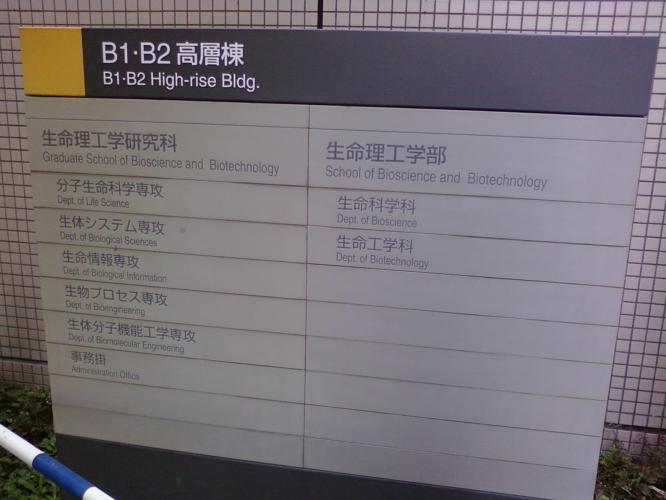
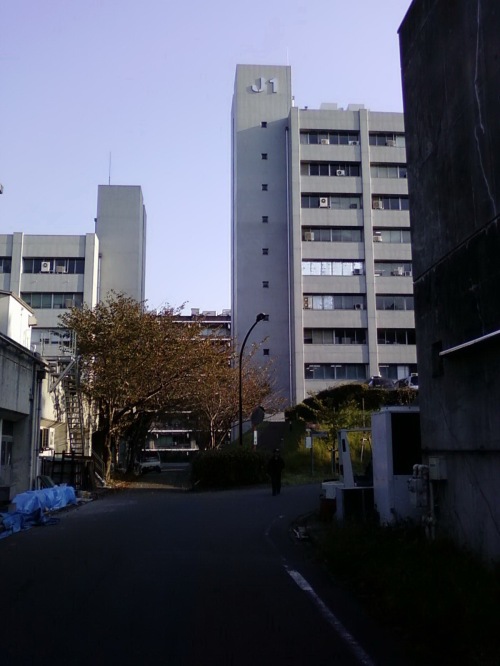




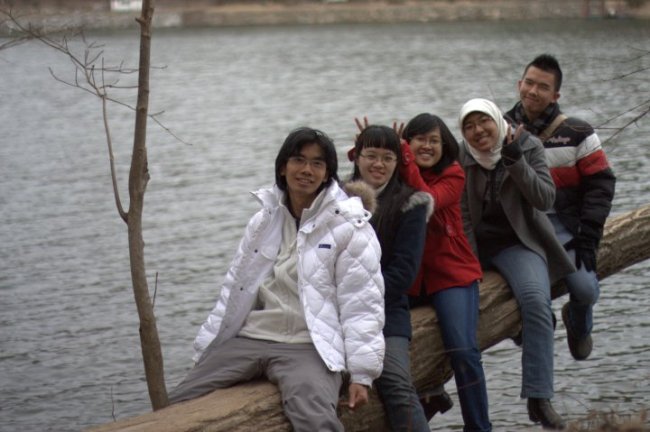
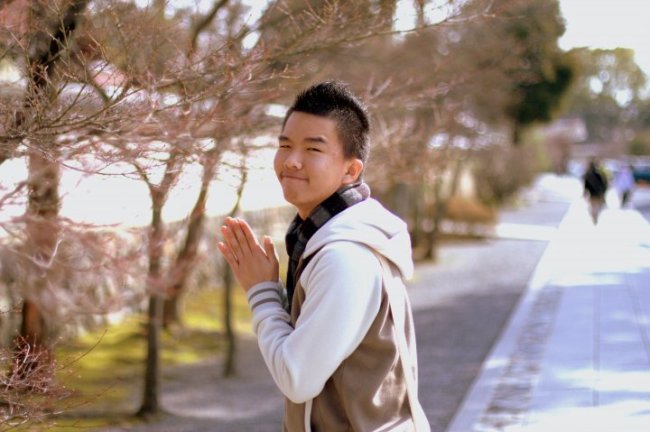
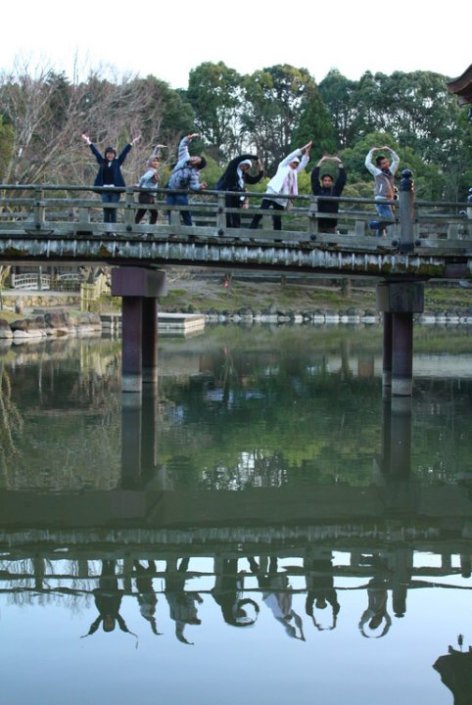
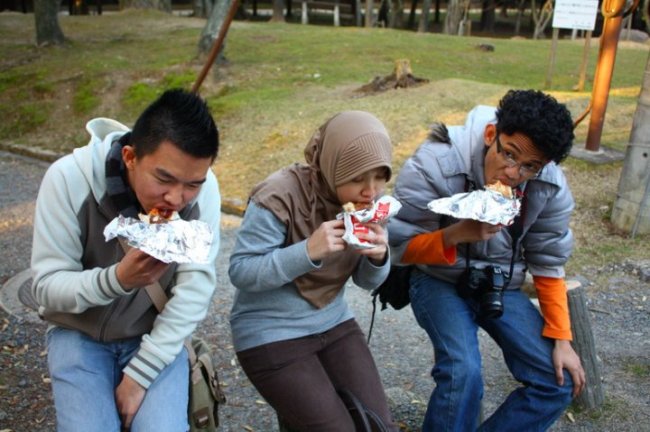
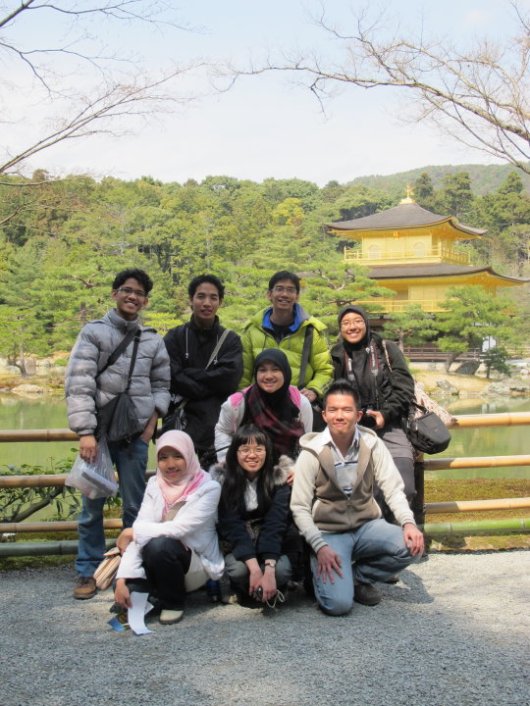

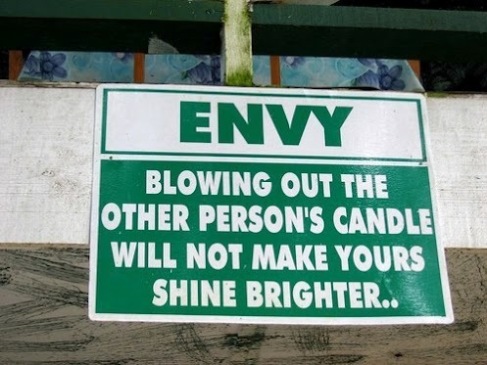
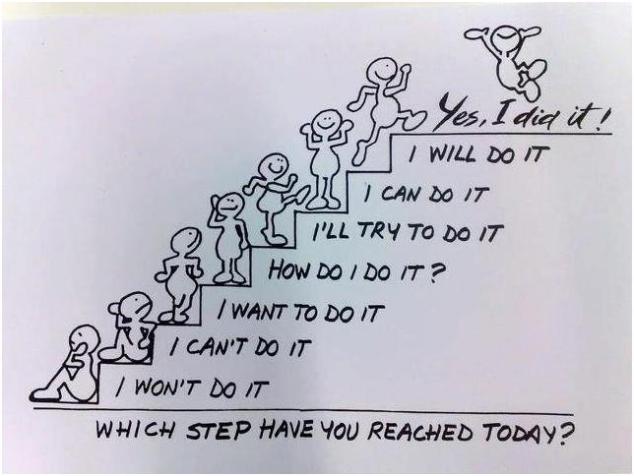


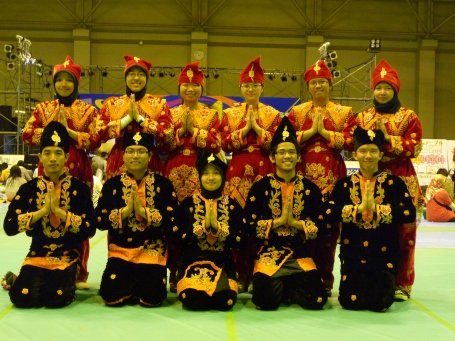
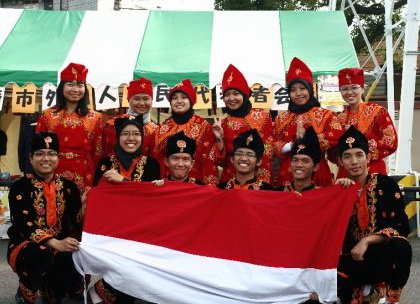
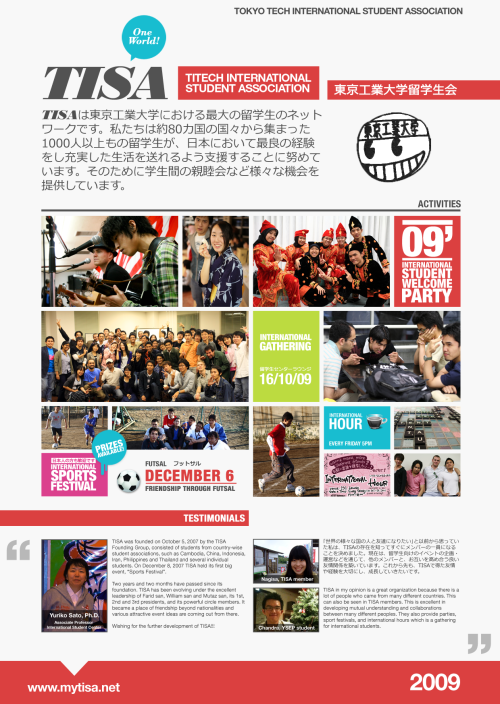
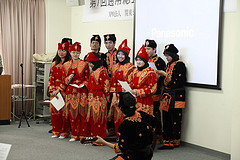












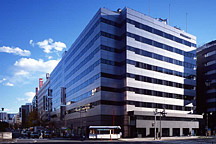

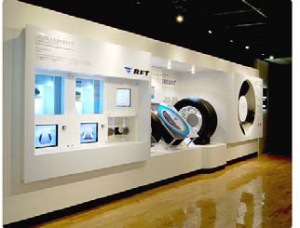
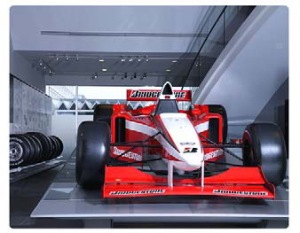
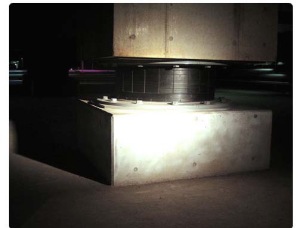



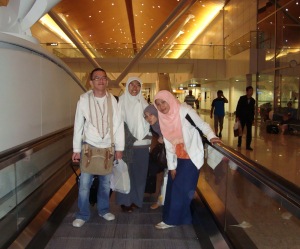
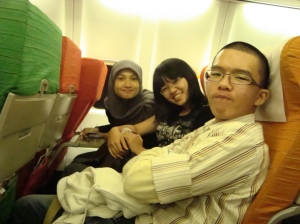

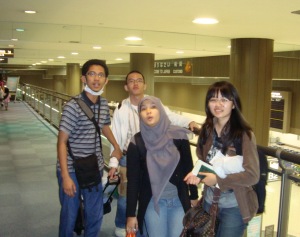
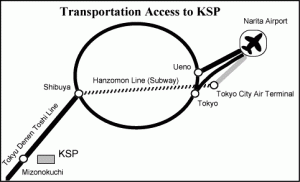



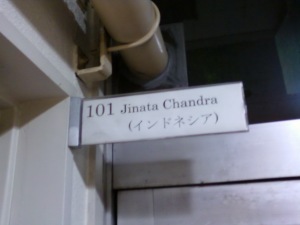
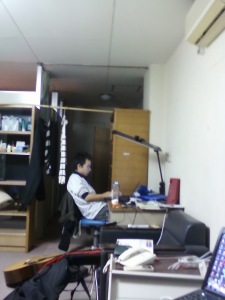
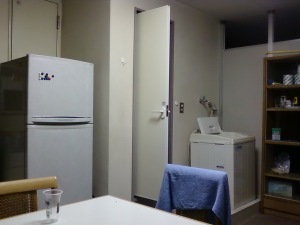


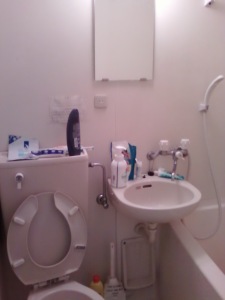
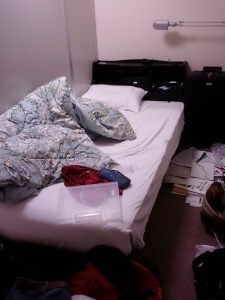

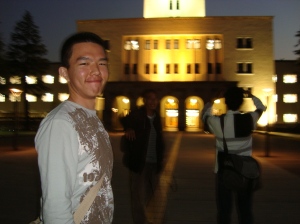
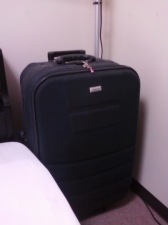
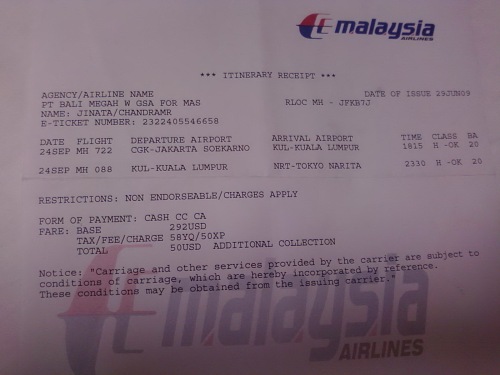

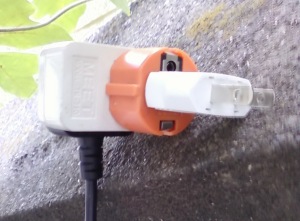
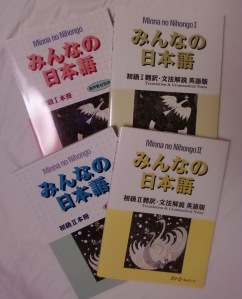
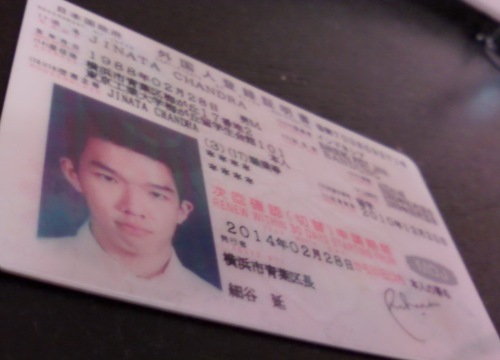
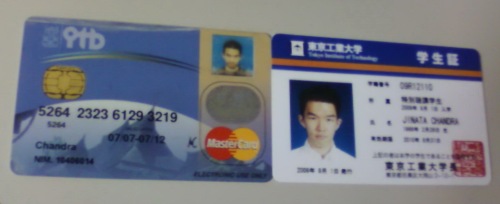
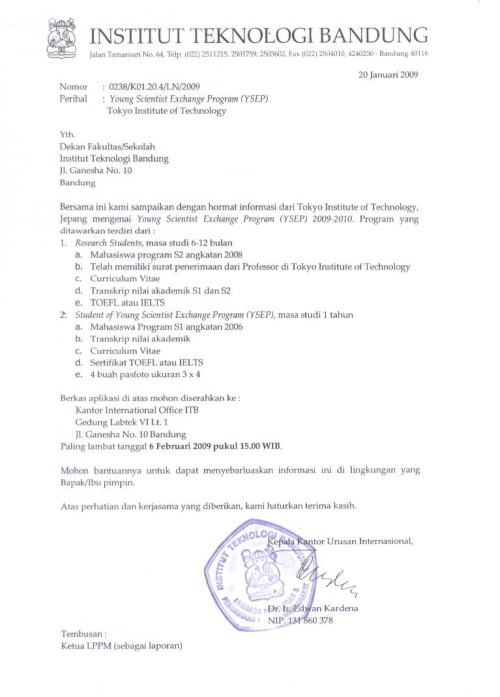

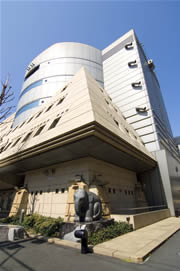
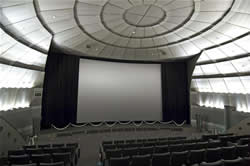

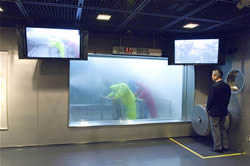
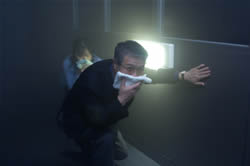

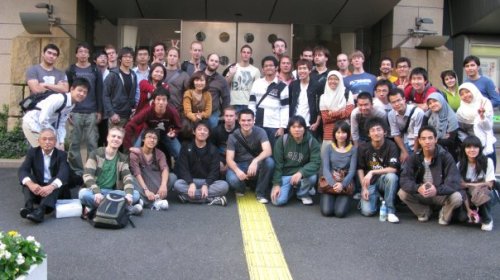




You must be logged in to post a comment.